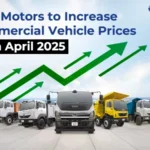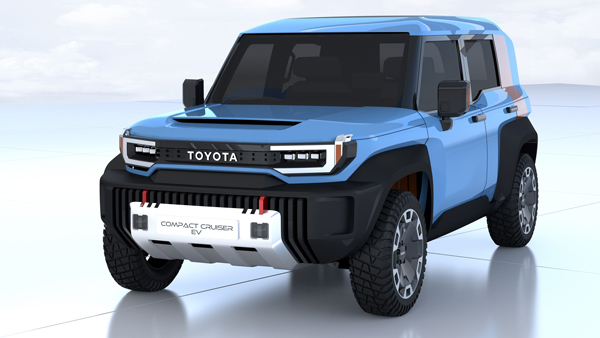
Expected Price Hikes Across Car Models in India – Full Breakdown of 2025 Price Changes for All Manufacturers
Expected Price Hikes Across Car Models in India – Full Breakdown of 2025 Price Changes for All Manufacturers
As we move into April 2025, a wave of price hikes is set to affect a wide range of car models across various manufacturers in India. In light of rising input costs and inflation, manufacturers have announced price increases for several of their popular models. If you’re planning to buy a new car, this article will help you navigate the upcoming changes and understand the expected prices after the hike, providing a comprehensive look at the price adjustments for various models and manufacturers.
This article will give you a detailed, in-depth breakdown of how prices for cars will change in April 2025. We’ve compiled the price hikes for major car brands, compared the current prices with the revised prices, and presented them in a well-organized table format to ensure maximum clarity.

Overview of Price Hike Trends
In the first quarter of 2025, manufacturers including Tata Motors, Maruti Suzuki, Hyundai, Mahindra, and more have announced price hikes across multiple segments due to rising production costs, supply chain constraints, and inflation. Each manufacturer has implemented different hikes across their respective models, with the general increase ranging from Rs. 10,000 to Rs. 50,000, depending on the model and variant.
Price Hike Breakdown by Manufacturer and Model
The following table illustrates the price hikes across multiple popular car models in India:
| Manufacturer | Model | Current Price (Rs.) | Price After Hike (Rs.) | Price Hike (Rs.) |
|---|---|---|---|---|
| Maruti Suzuki | Swift | 5,99,000 | 6,19,000 | 20,000 |
| Baleno | 7,30,000 | 7,55,000 | 25,000 | |
| Vitara Brezza | 9,50,000 | 9,80,000 | 30,000 | |
| Tata Motors | Nexon EV | 15,99,000 | 16,40,000 | 41,000 |
| Harrier | 20,10,000 | 20,60,000 | 50,000 | |
| Hyundai | Creta | 11,20,000 | 11,50,000 | 30,000 |
| Venue | 7,30,000 | 7,60,000 | 30,000 | |
| Mahindra | XUV700 | 18,70,000 | 19,10,000 | 40,000 |
| Thar | 10,50,000 | 10,90,000 | 40,000 | |
| Honda | City | 11,00,000 | 11,30,000 | 30,000 |
| Amaze | 7,00,000 | 7,20,000 | 20,000 | |
| Toyota | Innova Crysta | 19,50,000 | 19,80,000 | 30,000 |
| Fortuner | 37,50,000 | 38,10,000 | 60,000 |
Impact of Price Hike on Popular Segment Cars
For many car buyers, the price hike in the mid-range and premium segments will have the most significant impact. Let’s take a closer look at some of the price hikes in the popular segments:
Hatchbacks & Compact Cars
-
Maruti Suzuki Swift: A price hike of Rs. 20,000 may seem modest but will affect the entry-level buyer market. The Swift, priced at Rs. 6.19 lakh after the hike, remains one of the most affordable cars in its segment.
-
Tata Altroz: This premium hatchback sees a Rs. 25,000 hike, making it less affordable for budget-conscious buyers.
SUVs and Crossovers
-
Hyundai Creta: With an increase of Rs. 30,000, the popular compact SUV will now start at Rs. 11.5 lakh, making it slightly more expensive for entry-level customers but still a top choice in the segment.
-
Tata Nexon EV: The electric version of the Nexon has experienced one of the higher hikes at Rs. 41,000, pushing the price to Rs. 16.4 lakh. This price increase may affect electric car buyers, but it remains competitive in the EV market.
Premium & Luxury Cars
-
Mahindra XUV700: A significant increase of Rs. 40,000 has pushed the price to Rs. 19.1 lakh, a substantial hike in the premium SUV segment.
-
Toyota Fortuner: The price hike of Rs. 60,000 for the Fortuner places it at Rs. 38.1 lakh, which may affect the premium SUV market but still keeps the Fortuner competitive in the luxury SUV category.
How the Price Hike Affects the Market
While some of the hikes are relatively small, they could still significantly affect buyer decisions. The increase in prices primarily reflects rising production costs, including the cost of raw materials, labor, and logistics. As these costs rise, manufacturers are forced to pass on the burden to consumers, which could result in reduced demand for some models. However, the strong demand for vehicles in India, especially in the SUV and electric segments, may buffer the impact on sales.
Conclusion
With the rise in car prices expected from April 2025, it is essential for prospective buyers to stay updated and make informed decisions. The expected hikes are a result of ongoing inflationary pressures and global supply chain challenges, but despite the increases, there are still affordable and competitive options in the market. Buyers should factor in the new prices when considering their next purchase and explore financing options that may soften the impact of the price increases.
Stay tuned for more updates as car manufacturers continue to announce changes to their pricing in the coming months.




